A Basic Guide to Mythological Creatures
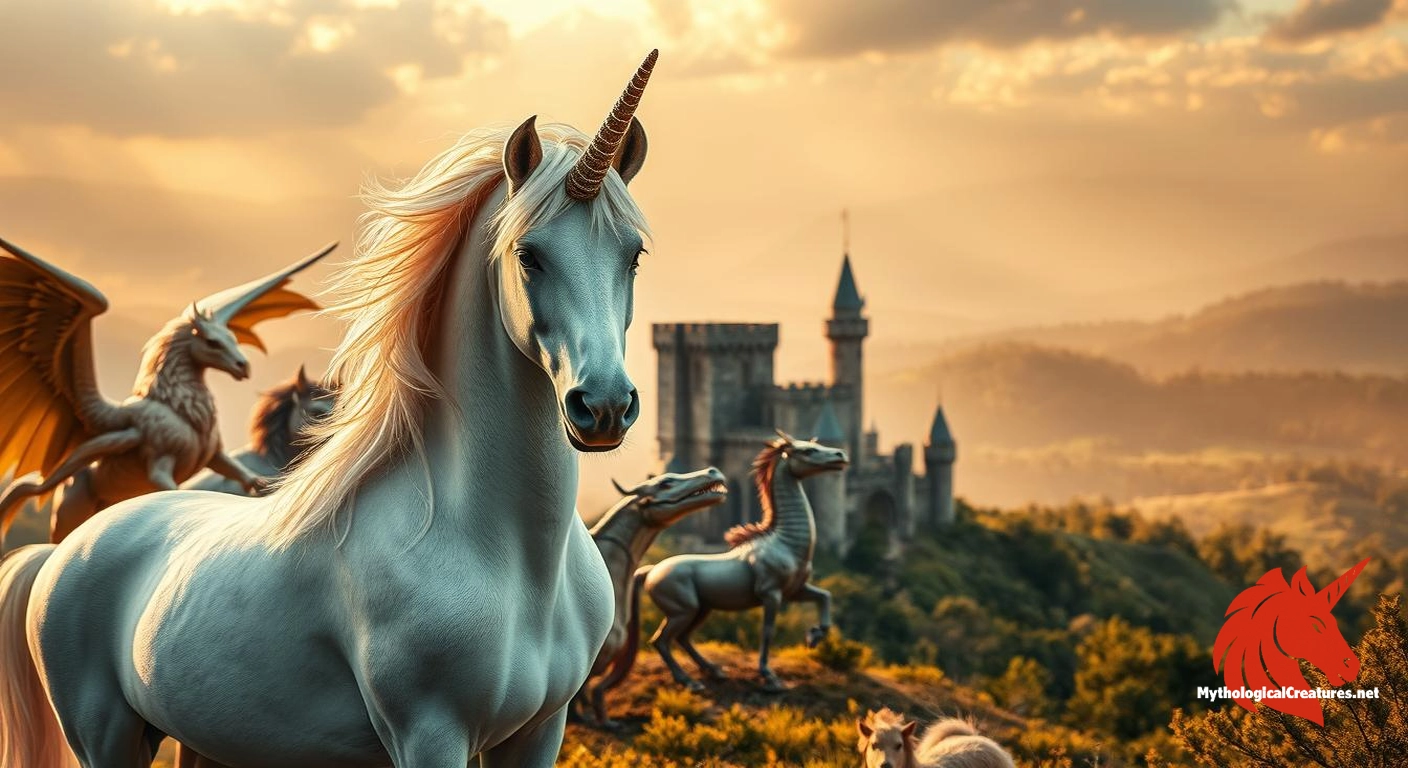
The Enduring Allure of Mythical Creatures Throughout History
Mythical creatures have captivated humans for thousands of years. They appear in ancient myths and modern tales. This introduction looks into their beginnings, meanings, and how they've shaped cultures globally.
Their stories connect the known and unknown. They explain natural mysteries or teach moral lessons.
Early civilizations used mythical beasts to understand their world. In Mesopotamia, the lion-headed Pazuzu symbolized chaos and protection. Egyptian gods with animal features showed divine power and earthly elements.
These beings were more than stories. They helped shape governance, religion, and cultural identity.
- Explaining natural disasters through creature lore
- Using shapeshifters to explore identity and transformation
- Dragons as symbols of power across China, Europe, and the Americas
Why do similar mythical beasts appear worldwide? The global presence of winged serpents or forest spirits shows universal human needs. These creatures continue to captivate us today.
They appear in fantasy novels and games. This shows the lasting appeal of mythical creatures in our world.
Understanding the Origins of Creature Mythology
Mythical beasts started when ancient people tried to understand their world. They told stories of creatures to make sense of their surroundings. These tales often matched real landscapes and challenges they faced.
Coastal folks imagined sea serpents to explain storms. Mountain people told of giants causing avalanches. These stories helped teach survival and explain nature's secrets.
- Coastal zones: Whales became sea monsters
- Forest areas: Unseen predators inspired shadowy creatures
- Deserts: Sandstorms turned into vengeful spirits Many mythical beasts came from natural phenomena that were not understood. The myth of one-eyed cyclops might have come from ancient Greeks studying elephant skulls. Dragon legends might have started from dinosaur fossils found in different places.
These discoveries led to stories to fill in the gaps of science.
Oral traditions used creature myths to warn people. Tales of forest spirits kept children safe. Storms were blamed on angry spirits. Over time, these stories became cultural symbols, mixing fact and fantasy.
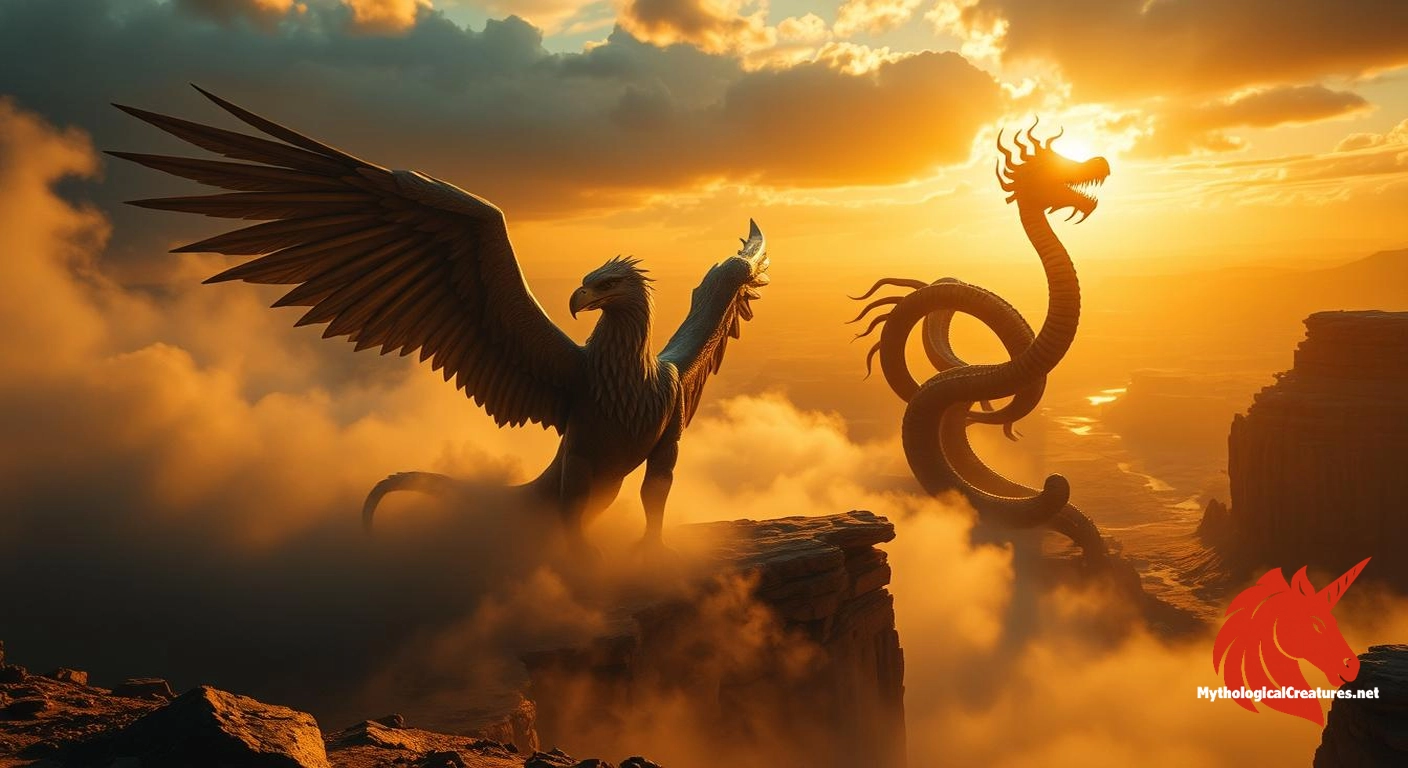
Featured Mythological Treasure
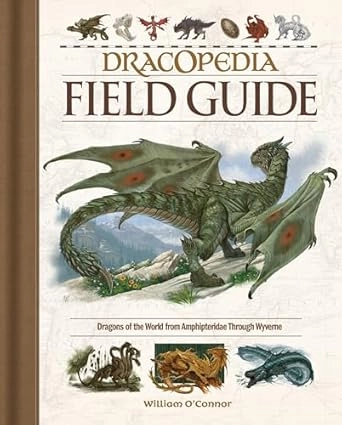
Dracopedia Field Guide: Dragons of the World from Amphipteridae through Wyvernae
Each genus of dragon is meticulously chronicled--from winged Coatyls and Sea Orcs to itty, bitty Feydragons to fire-breathing Great Dragons.
Classification Systems for Mythical Creatures Across Cultures
Humans have always grouped mythical creatures into categories. This helps us understand why some are seen as awe-inspiring and others as frightening. Let's look at how different cultures sort these magical beings.
Benevolent vs. Malevolent Beings
Mythical creatures often teach us moral lessons. Good beings like guardian spirits or healing dragons are different from bad ones like ogres or fire-breathing monsters. For instance, the Japanese kitsune can be a wise protector or a trickster spirit.
Elemental Affiliations
Many creatures are linked to natural forces:
- Earth: Trolls, Goblins, and Giants
- Air: Sylphs, Wind Elementals, and Thunderbirds
- Fire: Phoenixes, and Fire Spirits
- Water: Merfolk, River Nymphs, and Kelpies
Featured Mythological Treasure
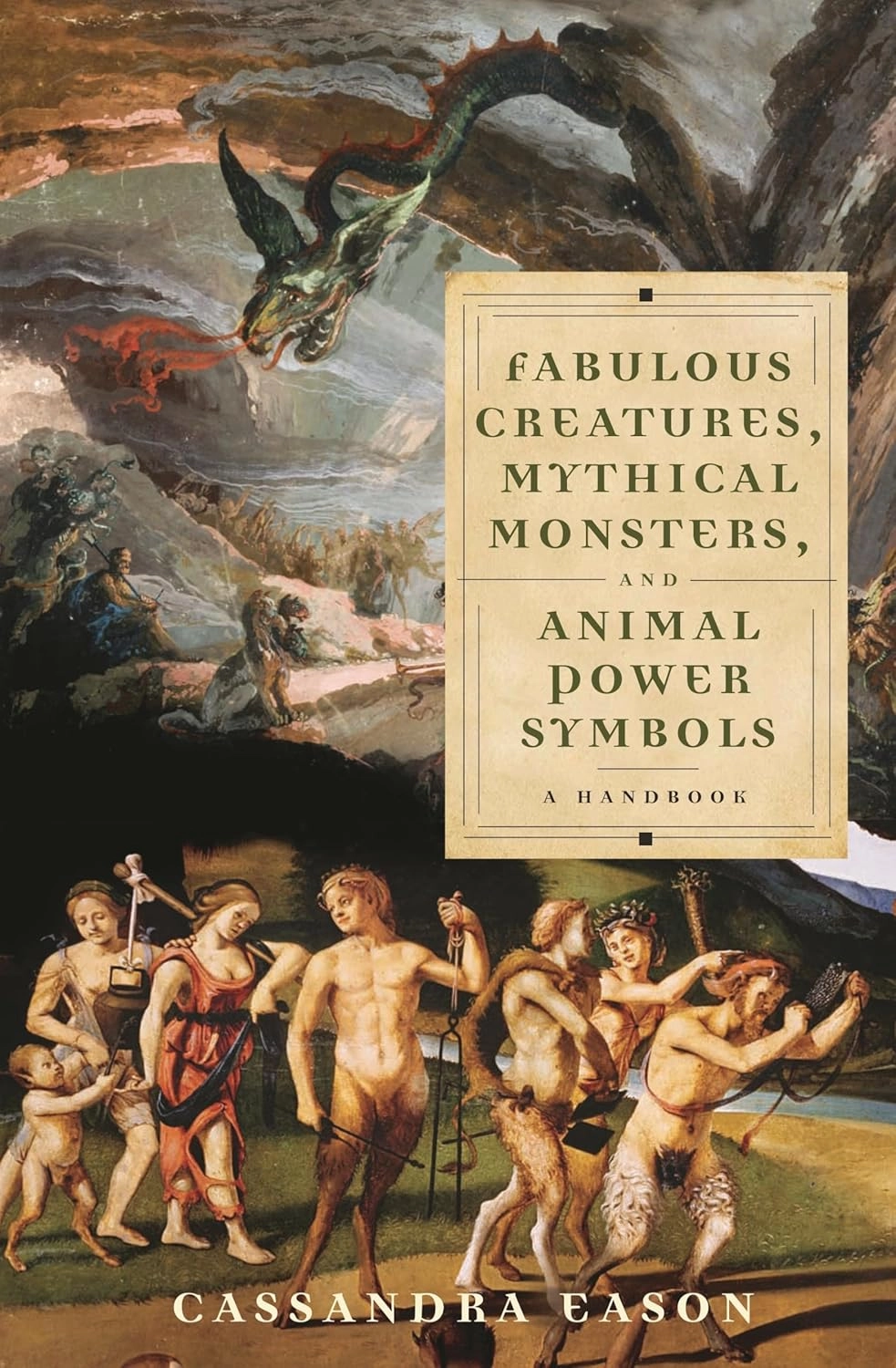
Fabulous Creatures, Mythical Monsters, and Animal Power Symbols: A Handbook
This book offers both traditional and little known folklore and legend and delves into wonderful world of saints who claimed to change into deer and modern cryptozoological monsters.
Hybrid, Shapeshifter, and Pure Forms
Physical traits help sort creatures into groups:
- Hybrids: Centaurs (human-horse), mermaids (human-fish)
- Shapeshifters: Werewolves, selkies, and shape-changing fox spirits
- Pure forms: Creatures like dragons or unicorns with no human or animal base
Regional Classification Methods
Native American tribes sort beings by their lore. Norse myths divide creatures by realms like Asgard or Jotunheim. Asian traditions often use yin/yang balances. European systems might group by habitat or purpose.
Ancient Mythical Beasts of the Mediterranean
The Mediterranean is full of legendary creatures. It mixes history with fantasy. Creatures like Greece's centaurs and Egypt's godly hybrids have shaped art and stories. Their tales live on in today's media.
Greek Mythological Creatures: From Centaurs to Chimeras
Greece's myths are filled with famous creatures. Centaurs, half-human and half-horse, are known for their wisdom and wildness. Other notable beings include:
- Hydra: The nine-headed serpent whose heads regrew when cut off.
- Minotaur: The bull-headed labyrinth guardian.
- Pegasus: The winged horse symbolizing freedom and heroism.
Roman Adaptations and Unique Contributions
Rome took Greek myths and made them their own. They introduced the two-faced Janus and the ghostly Lemures. Roman stories mixed local legends with Greek tales, connecting cultures.
Egyptian Creature Deities and Their Powers
Egyptian gods were a mix of human and animal. Anubis (jackal-headed) guided souls, Horus (falcon-headed) was the king, and Sekhmet (lion-headed) was both war and healing. These gods' powers shaped life and the universe.
Mythical Dragons: Evolution and Cultural Significance
Mythical dragons are special creatures found in stories from all over the world. They have evolved differently in each place, showing both fear and respect.
- Eastern dragons, like China’s lung, are seen as wise guardians linked to water and prosperity.
- European dragons, such as the Norse Fafnir, often represent chaos to be conquered by heroes.
- Mesoamerican traditions honor feathered serpents like Quetzalcoatl as divine rulers and creators. These creatures have many different traits. Chinese dragons can fly without wings, while European ones breathe fire. They show how humans see nature's power and our moral battles.
In Japan, ryū dragons bless emperors, while Slavic zmaj are protectors of mountains.
Today, mythical dragons live on in movies, games, and books. They are friends or foes in new stories. Their lasting presence shows how they fit into new tales while keeping their old magic alive. From ancient coins to big-screen hits, dragons are symbols of our endless love for stories.
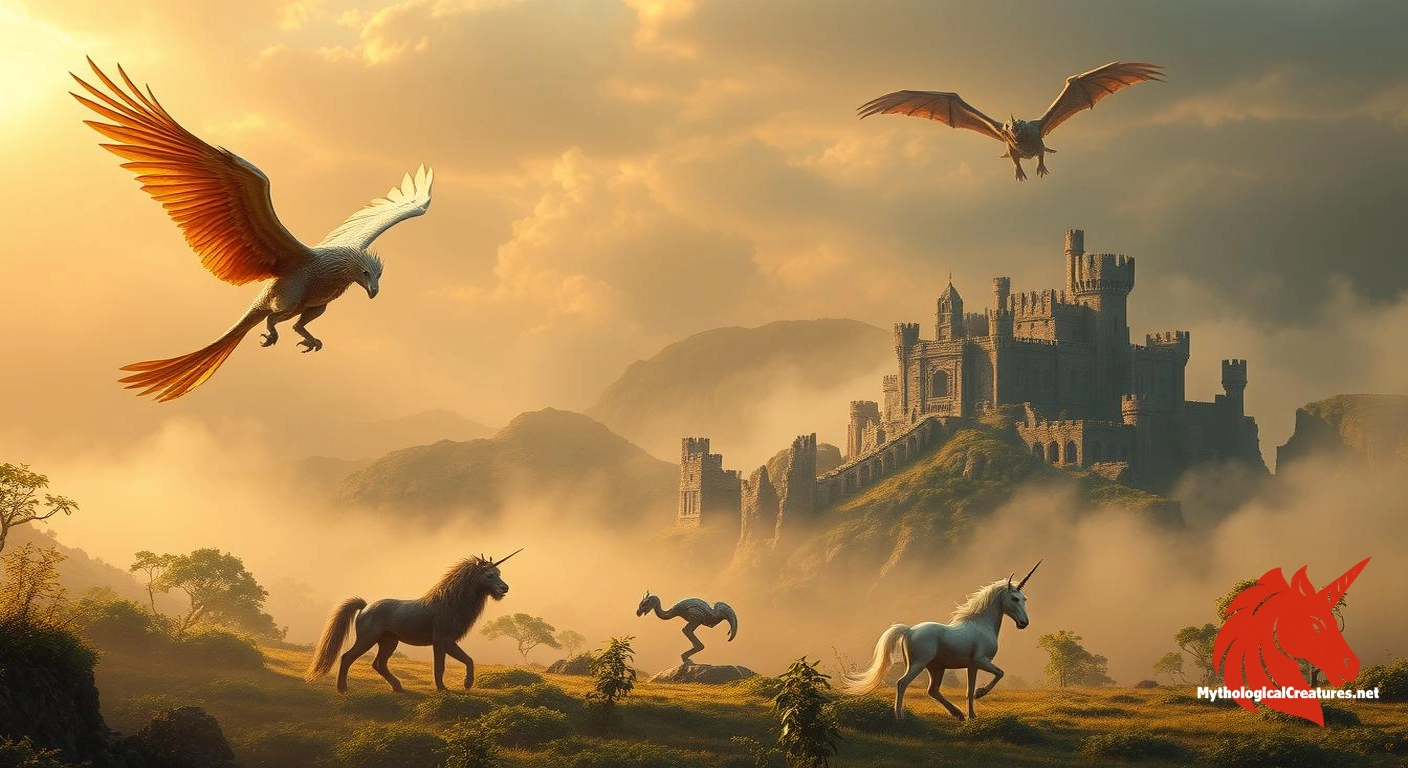
Norse and Germanic Mythical Monsters
Northern European myths are full of stories about mythical beasts. These creatures came from icy lands and old beliefs. They are still loved today, showing their lasting impact on our dreams.
Viking lore tells of mythical monsters key to Norse myths. Some of these include:
- Jörmungandr: A huge sea serpent around Midgard, set to fight Thor at Ragnarök.
- Fenrir: A wolf tied by gods, whose escape means the end of the world.
- Draugr: Undead guarding treasure, haunting coastal towns in stories. These beings show the power of nature and teach us lessons. They live on in games like God of War and movies.
Forest Dwellers and Mountain Beings
Scandinavian tales are filled with spirits of the wild:
- Trolls: Giants that can change shape, afraid of sunlight, living in rocky mountains.
- Hulder-folk: Magical forest people with cow-tails, who lure travelers.
- Nisse: Kind spirits in homes, rewarding those who treat them well.
Creatures of Germanic Folklore
Germanic tales bring their own mythical beasts:
- Kobolds: Spirits living in mines, asking for gifts.
- Nixies: Water nymphs, leading people to their deaths in rivers.
- Wild Huntsman: A ghostly leader of a procession, warning of death. These mythical monsters show the harshness of their worlds. Trolls live in cliffs, nixies in rivers. Today, they inspire books and games, keeping their stories alive.
Asian Mythical Creatures and Their Symbolic Meanings
Asia's mythologies are filled with legendary beings that shape traditions and beliefs. From India's nāga serpents to Japan's fox spirits, these mythical creatures carry deep cultural meanings. The nāga, revered in Hindu and Buddhist stories, symbolizes protection and water's life-giving power.
Meanwhile, China's qilin—a wise, horned creature—embodies prosperity and virtue. This contrasts sharply with Western unicorn lore.
Japan's kitsune, foxes with supernatural abilities, represent intelligence and trickery. Their stories warn of balancing curiosity and wisdom. Tanuki, mischievous raccoon dogs, teach adaptability through playful tales.
In contrast, hungry ghosts reflect Buddhist teachings on greed. These beings aren't just stories—they're moral guides woven into festivals, art, and even modern media.
- Nāga: Guardians of rivers and temples
- Qilin: Harbingers of peace and wise rulers
- Kitsune: Messengers linking humans and spirits
- Hanuman: The monkey god symbolizing devotion in Hindu epics Mythical creatures like these also traveled along ancient trade routes, blending ideas across borders. Today, they thrive in anime, video games, and traditional performances. Their enduring presence shows how these beings adapt to modern times while keeping ancient wisdom alive.
The Most Powerful Mythical Animals in Native American Lore
Native American cultures across North America have a rich tapestry of mythical animals. These creatures are deeply tied to land, spirit, and storytelling. They reflect unique ecological wisdom and spiritual truths, varying widely among hundreds of distinct tribal traditions.
Sky Beings and Their Significance
Avian mythical creatures dominate sky realms in many traditions. The Thunderbird—its wings roaring thunder and eyes sparking lightning—appears in stories from the Pacific Northwest to the Great Plains. Other tribes speak of celestial eagles or migratory spirits guiding seasonal changes. These beings embody forces of weather and cosmic balance.
Earth and Water Creatures in Tribal Mythology
- Horned Serpent: The Anishinaabe Mishipeshu patrols lakes and rivers, its scales like armor and coils shaping waterways.
- Uktena: Cherokee legends describe this serpent with antlers, guardian of medicine springs and venomous power.
- Water Panthers: Some tribes imagine land-dwelling creatures merging feline traits with aquatic prowess.
Shapeshifters and Transformation Tales
Stories of transformation reveal deeper truths. Navajo skinwalkers—humans turned into predatory beings—warn against breaking taboos. Meanwhile, trickster figures like the Raven (Northwest Coast) and Coyote (Southwest) shift forms to teach lessons about curiosity or adaptability. These tales underscore connections between human and spirit worlds.
Mythical Creatures That Transcend Cultural Boundaries
Dragons, mermaids, and giants are found in stories from all over. They show what humans share, despite different cultures. These creatures reflect our common experiences and environments.
Universal Dragon Myths
Dragons are a big part of myths from China to Europe. But they are not the same everywhere:
- Chinese dragons bring rain and symbolize imperial power
- European dragons guard treasures but inspire fear
- Mesoamerican Quetzalcoatl is a divine serpent, while Australian rainbow serpents shape landscapes Scientists think ancient fossils might explain why dragons are everywhere. They mix real-world mysteries with our imagination.
Mermaid and Water Spirit Parallels
Half-human water beings are found in stories from coast to coast:
- Greek sirens lured sailors with songs
- Japan’s ningyo foretold disasters
- African Mami Wata and Russian rusalka link water’s beauty to danger These creatures show our wonder at oceans and rivers.
Giant and Ogre Archetypes Worldwide
Big mythical creatures stand for powerful forces:
- Norse jötnar fought gods in cosmic struggles
- Hindu rakshasas from India caused chaos
- North America’s wendigo symbolizes greed’s destructive power Their size and strength explain natural disasters or teach moral lessons.
Fantasy Creatures in Modern Literature and Cinema
Mythical creatures are key in today's stories. They appear in books and movies, inspiring new tales. Authors and filmmakers mix old myths with new twists.
Modern stories give classic creatures a new spin. J.R.R. Tolkien's dragons come from Norse myths but have their own stories. C.S. Lewis's Narnia series brings back talking animals and witches in new ways. J.K. Rowling's magical creatures, like hippogriffs, mix old tales with new magic.
- J.R.R. Tolkien: Dragons and elves reimagined
- C.S. Lewis: Narnian creatures with moral lessons
- J.K. Rowling: Beasts in a school-centered wizarding world Movies bring these creatures to life. Films like The Lord of the Rings use CGI to show Smaug and Balrogs. They mix old stories with new tech. Even dinosaurs in Jurassic Park spark debates about science and legend.
Recent movies like How to Train Your Dragon show dragons as friends, not just monsters. They show teamwork and empathy. This shows how stories reflect our hopes and fears, just like ancient myths.
How Mythical Creatures Influence Contemporary Pop Culture
Dragons and spirits now shine in movies, games, and art. These old tales get a new life in modern ways.
Video games make fantasy creatures come alive. Pokémon mixes myths from all over. The Witcher series draws from Slavic tales, letting players face creatures like the leshen.
On screens, mythical monsters tell epic stories. Dragons in Game of Thrones change how we see them. Guillermo del Toro's films mix old and new, exciting us all.
Artists today see mythical beasts in a new light. Digital spaces show off these works, from bright murals to online art. Fans share their own takes, making myths modern symbols of creativity and identity.
Cryptozoology: When Mythical Monsters Meet Scientific Inquiry
Cryptozoology looks into stories of creatures like Bigfoot, the Loch Ness Monster, and the Chupacabra. These mythical monsters are found in old tales but are now studied with new methods. Scientists and fans use cameras, DNA tests, and field research to find proof.
Many cryptids share traits with ancient myths. Bigfoot, for example, looks like wildmen from stories around the world. Today, old tales meet new tech in these searches. Social media shares both sightings and doubts, sparking online debates.
Apps and citizen science projects let people share data. This shows how myths change with technology.
Cultural respect is key. Indigenous stories about creatures often have deep meanings. Researchers must respect local beliefs while being scientific. Some animals, like the okapi, were once thought mythical but are now known to exist.
This shows the line between myth and reality is thin.
Cryptozoology raises big questions. Why do people want to prove mythical monsters exist? Maybe it's a desire to believe in hidden wonders. Whether through cameras or campfire tales, these searches show humanity's endless curiosity about the unknown.
The Timeless Legacy of Mythical Creatures
Mythical creatures have been part of our imagination for thousands of years. They show up in ancient art and today's movies. These beings reflect our deepest fears, hopes, and questions about life.
They remind us that stories of dragons, spirits, and shape-shifters are mirrors. They reflect our shared human experiences. These stories are not just tales.
These creatures change as cultures evolve. Today's video games, books, and movies use them to talk about new ideas. They explore themes like caring for the earth or finding who we are.
But their roots in old myths, like the Egyptian sphinx or Norse trolls, connect past and present. Even the search for "real" creatures shows their lasting appeal. It mixes science with wonder.
Mythical creatures ask big questions: What makes us different from nature? What's beyond our understanding? They show up in pop culture, proving they're alive and well.
They inspire awe or fear, but they also teach us to balance logic and creativity. They honor both old wisdom and new ideas.
Look at these stories with an open mind. They're more than fun—they connect us to our ancestors. They shared the same wonder we do. As long as we look for meaning, mythical creatures will guide us.